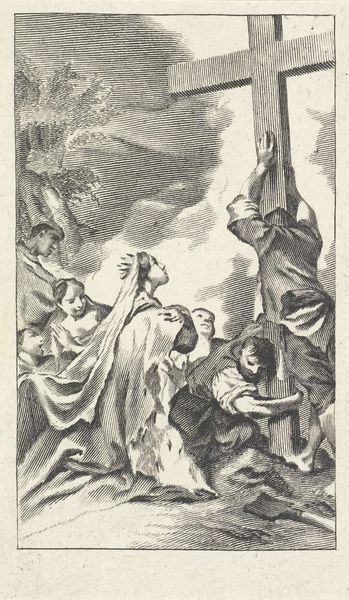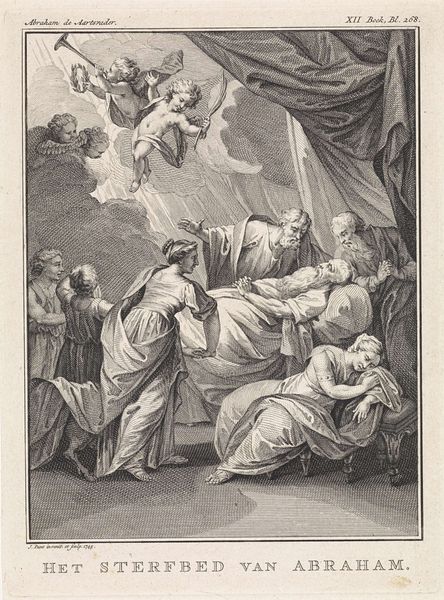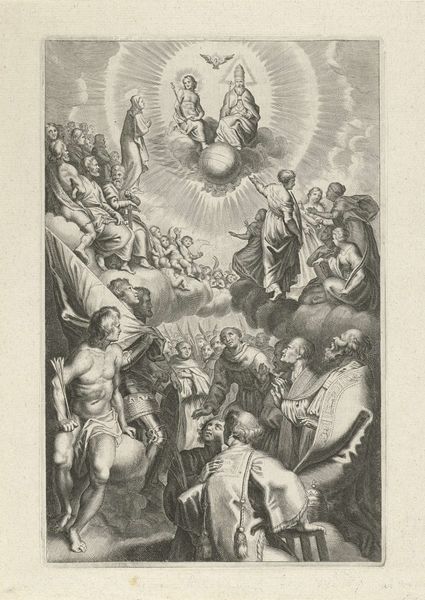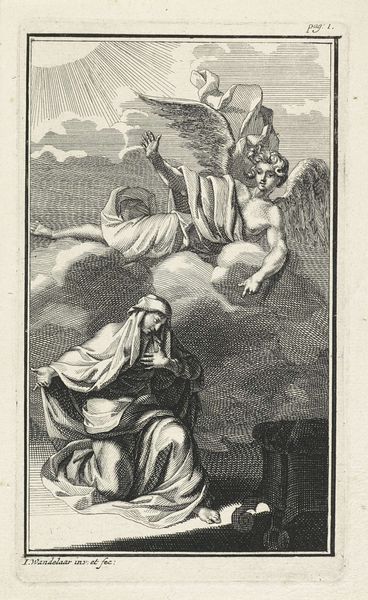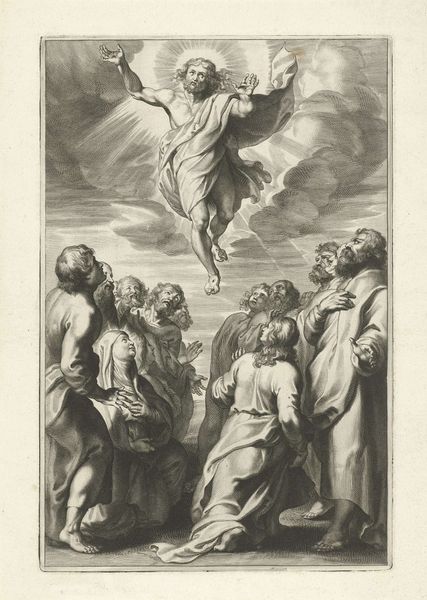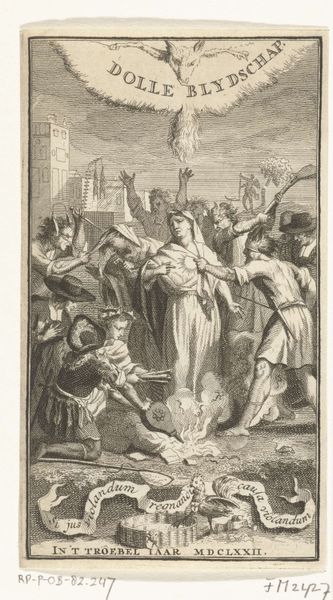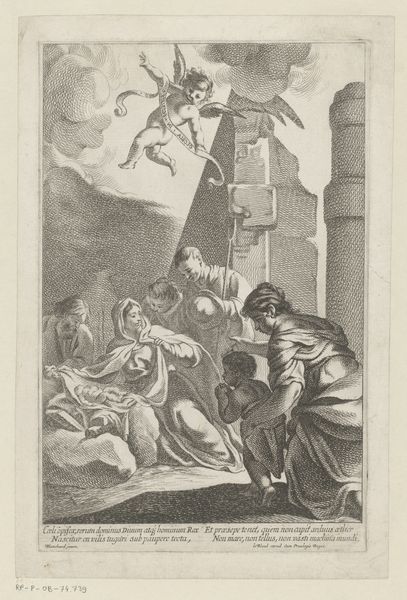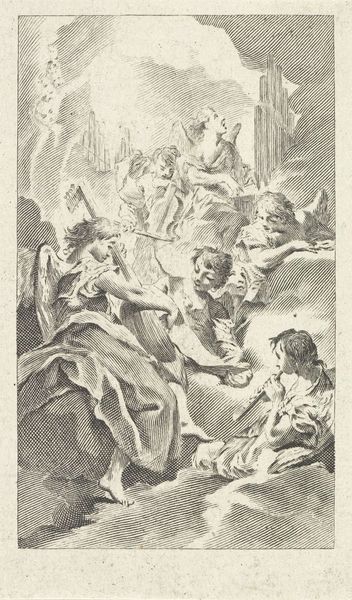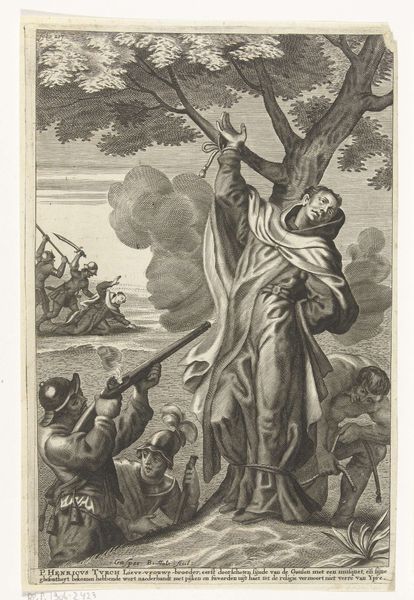
print, engraving
#
baroque
# print
#
figuration
#
history-painting
#
engraving
Dimensions: height 106 mm, width 64 mm
Copyright: Rijks Museum: Open Domain
Curator: Look at this print, Editor, entitled "Ten hemelopneming van Maria", or "The Assumption of Mary", dating back to 1740 and created by Giovanni Cattini. It's an engraving depicting the Virgin Mary ascending into heaven, surrounded by angels and watched by the Apostles. Editor: Immediately, I’m struck by the sharp contrasts, the dense line work which almost obscures the forms at the base and creates an incredible sense of ethereal lightness higher up, where Mary is depicted. The material itself—a print—makes me think about reproducibility, the broad distribution of religious imagery... Curator: Precisely! The print medium allowed such scenes to reach a wider audience and reinforced religious narratives. Consider the historical context. The Baroque period heavily relied on the propagation of such works. Dissemination was a huge deal, using images to convey narratives. Editor: Yes, and the choice of engraving specifically. The labour involved, the skill needed to render such detail. Engravings allowed for finer lines, which lends to the emotional intensity but what were the production networks that supported artists like Cattini in churning out such imagery? Who controlled its content? What was the influence of such artwork? Curator: Such engravings, often commissioned by religious orders, helped standardize imagery, influencing popular devotion and even political alignments through their circulation. Think of this work as part of a broader system of visual persuasion! The drama of the scene, typical of Baroque art, aimed to inspire faith but within established social roles. Mary’s story being used to uphold religious doctrine and, often, power structures. Editor: Looking closer, it feels a bit... propagandistic. The idealized depiction, the divine light, the reactions of awe—all geared toward reinforcing the Church’s authority, rather than individual contemplation. Yet it had impact at scale, touching countless hands that other masterpieces never did. Did Cattini even have the choice of self-expression? Curator: It certainly compels us to see past the mere art object. Considering its place in the history of mass communication sheds light on how beliefs were and are visually constructed and spread! Editor: Indeed! Analyzing these prints lets us to see the mechanics behind visual storytelling within religious and social contexts. We often forget art materials carry their own story. Curator: Precisely. Looking into production helps uncover power! Editor: So true. Thinking about engravings as a system offers fascinating insights!
Comments
No comments
Be the first to comment and join the conversation on the ultimate creative platform.
